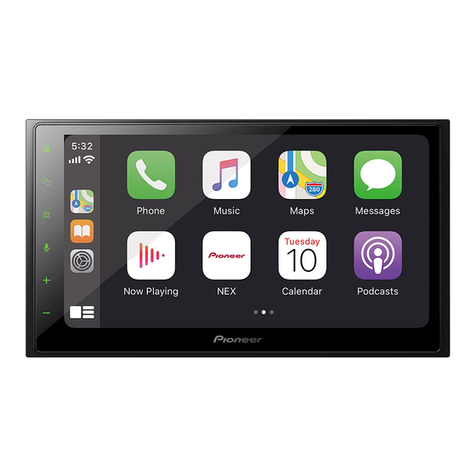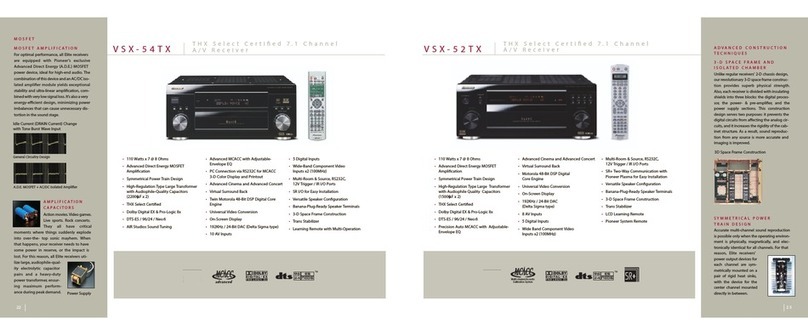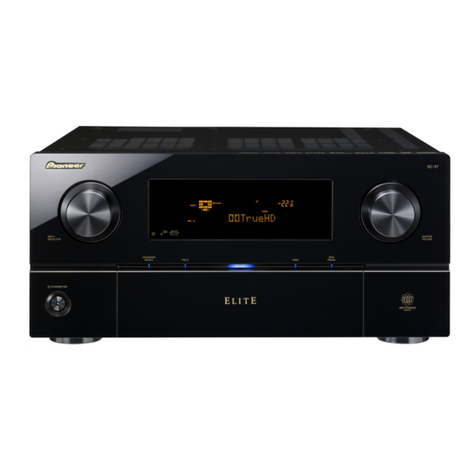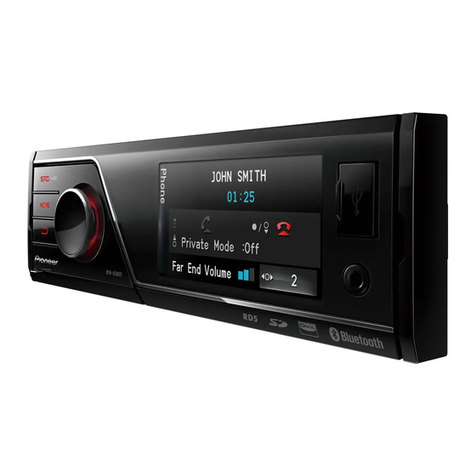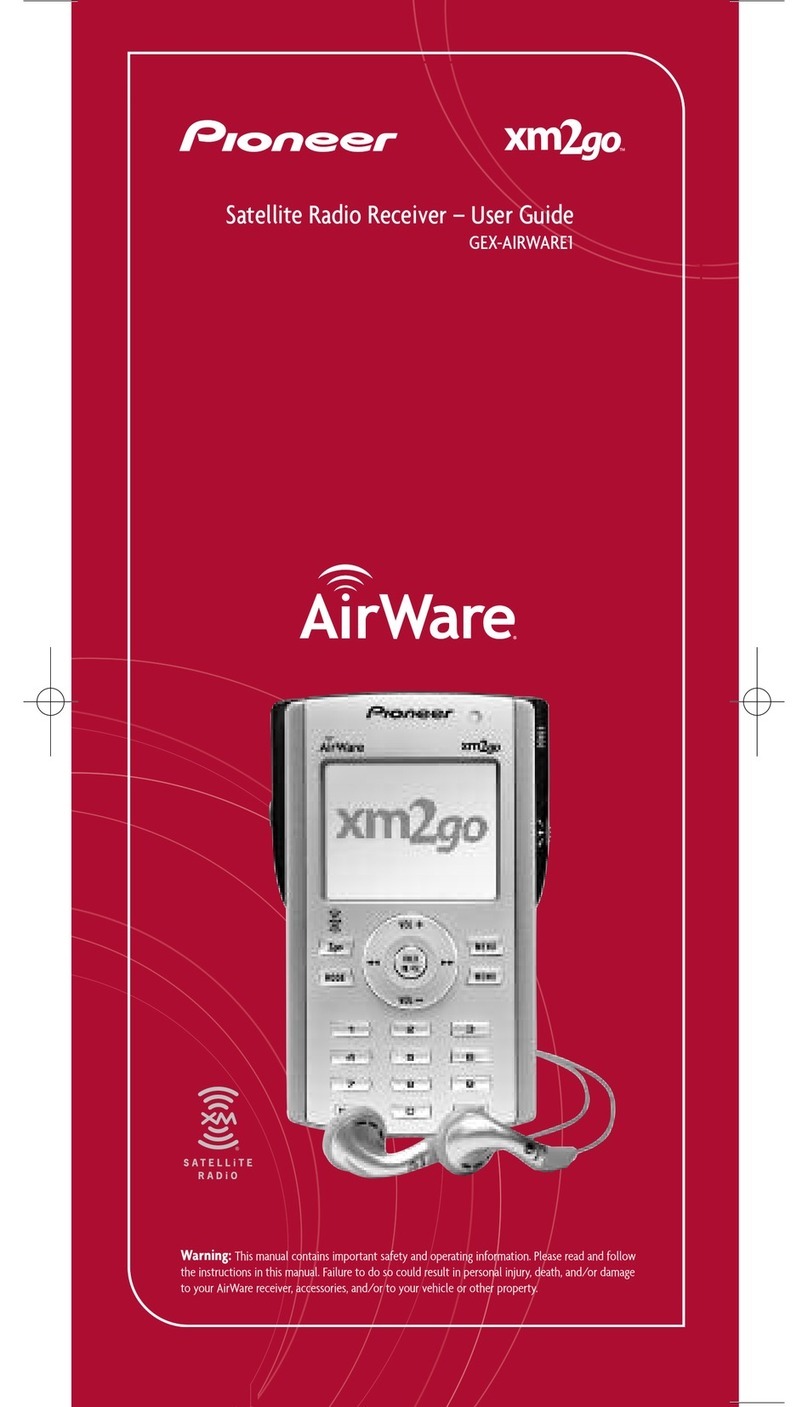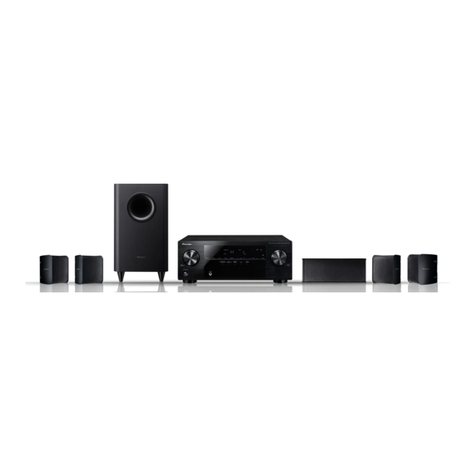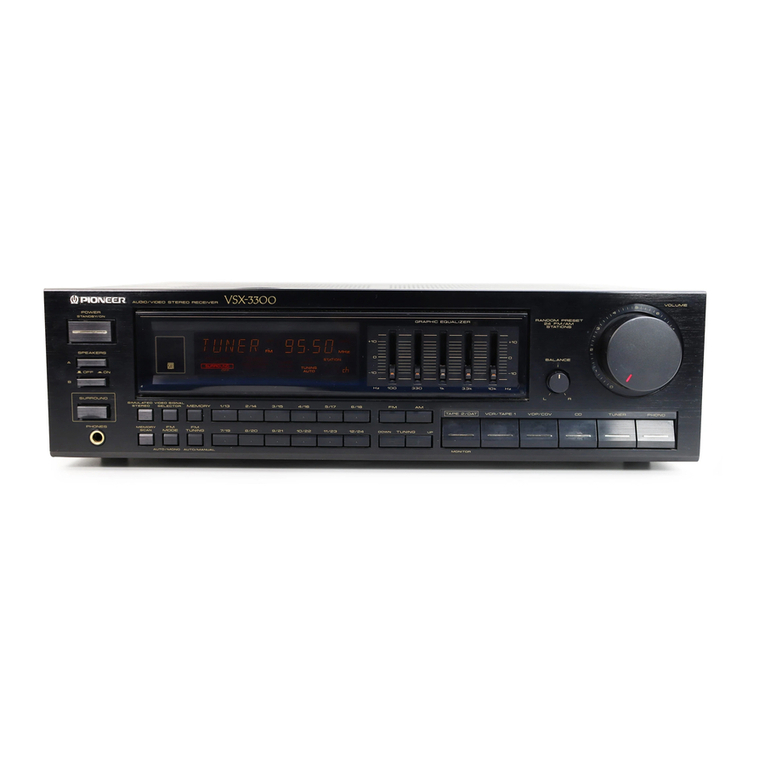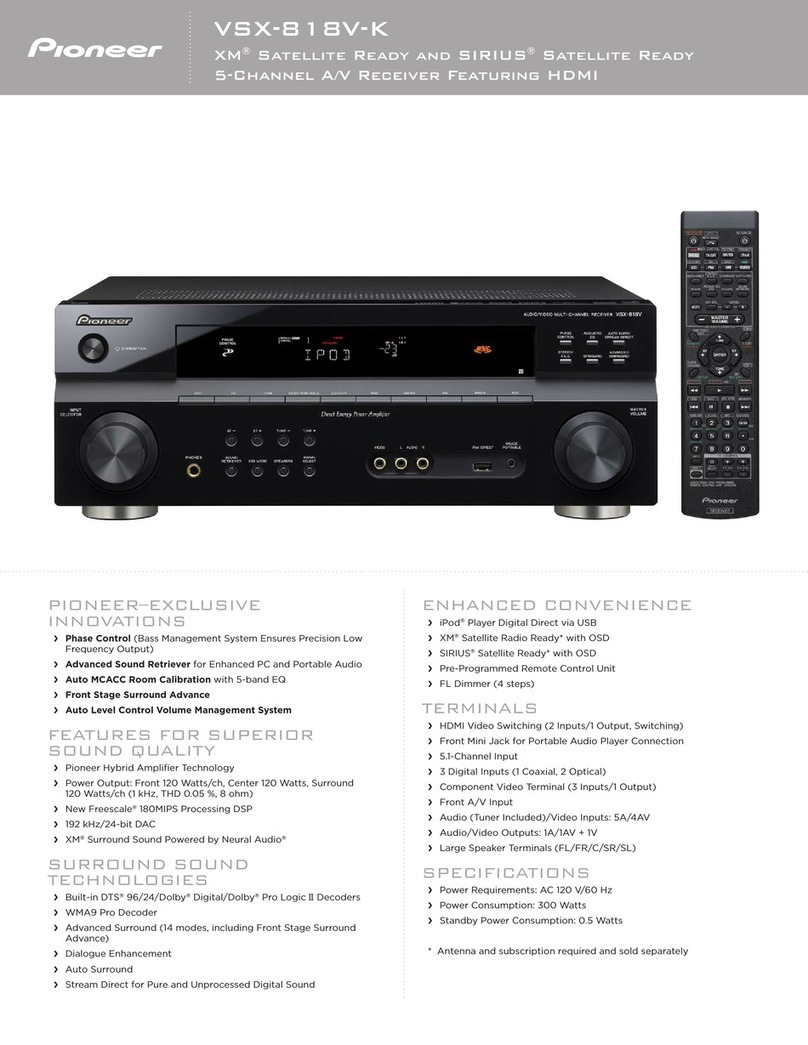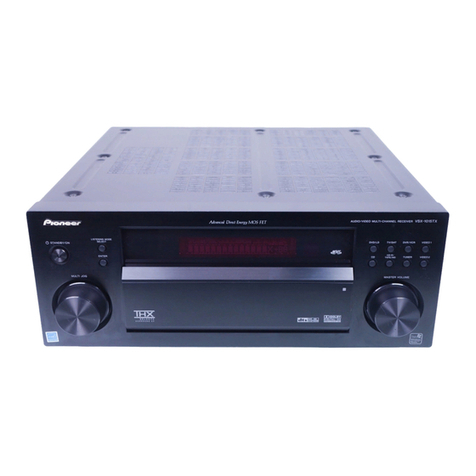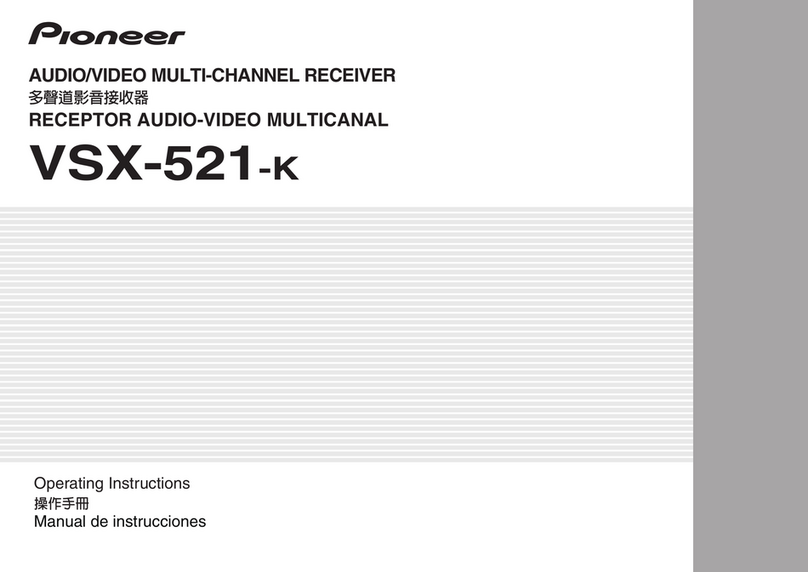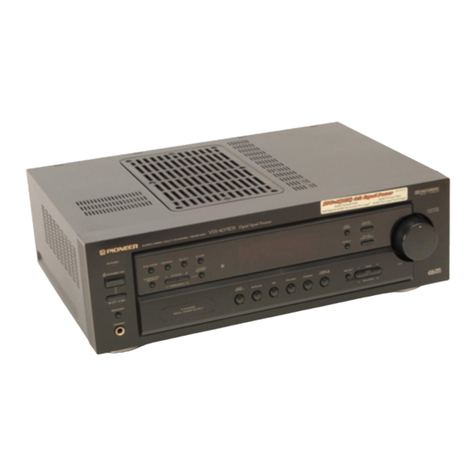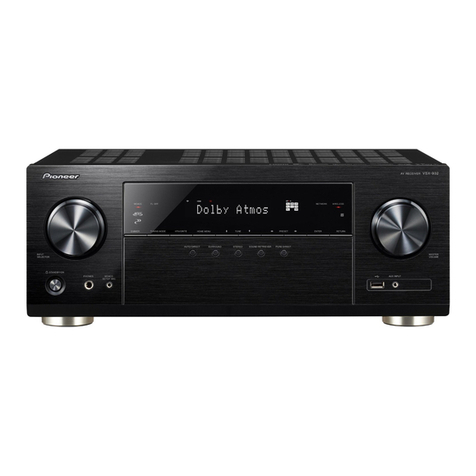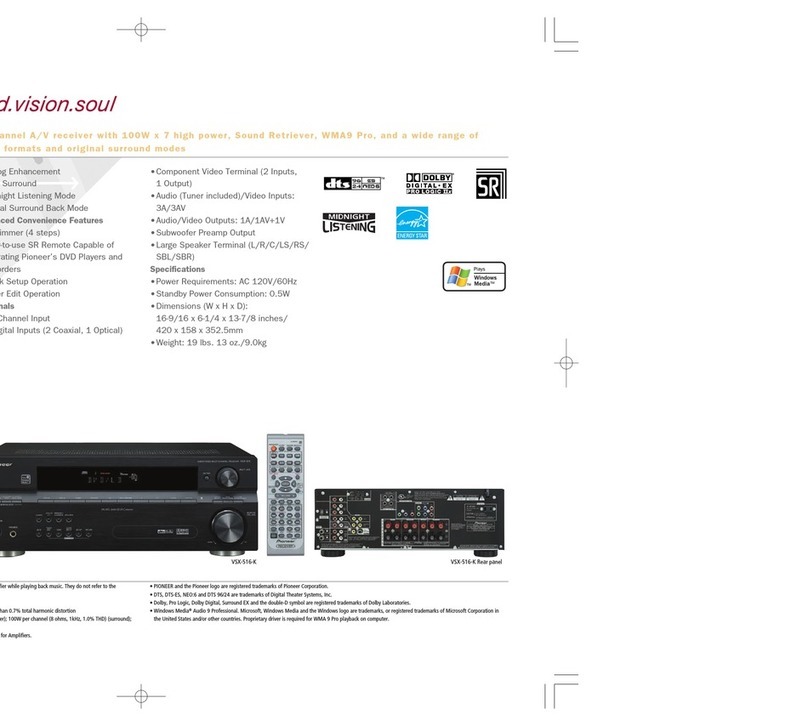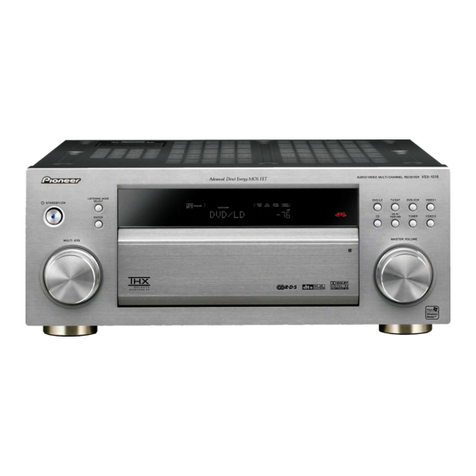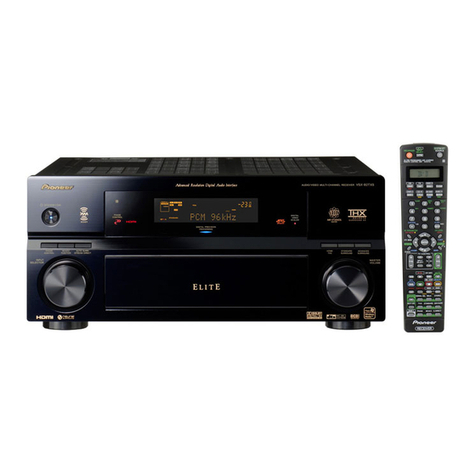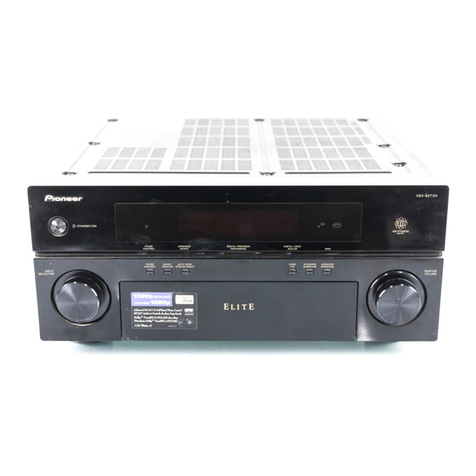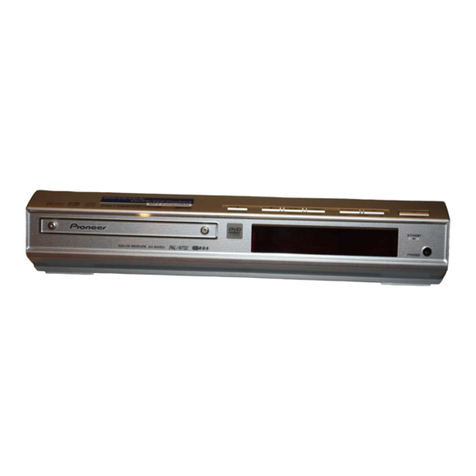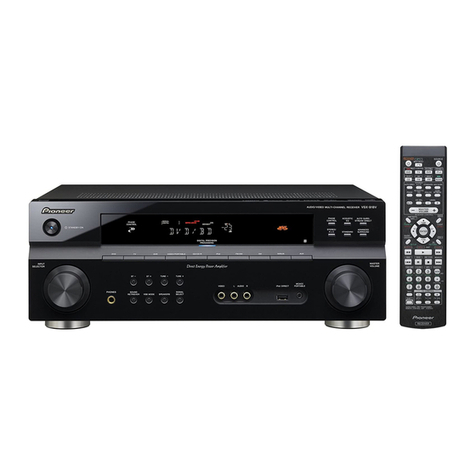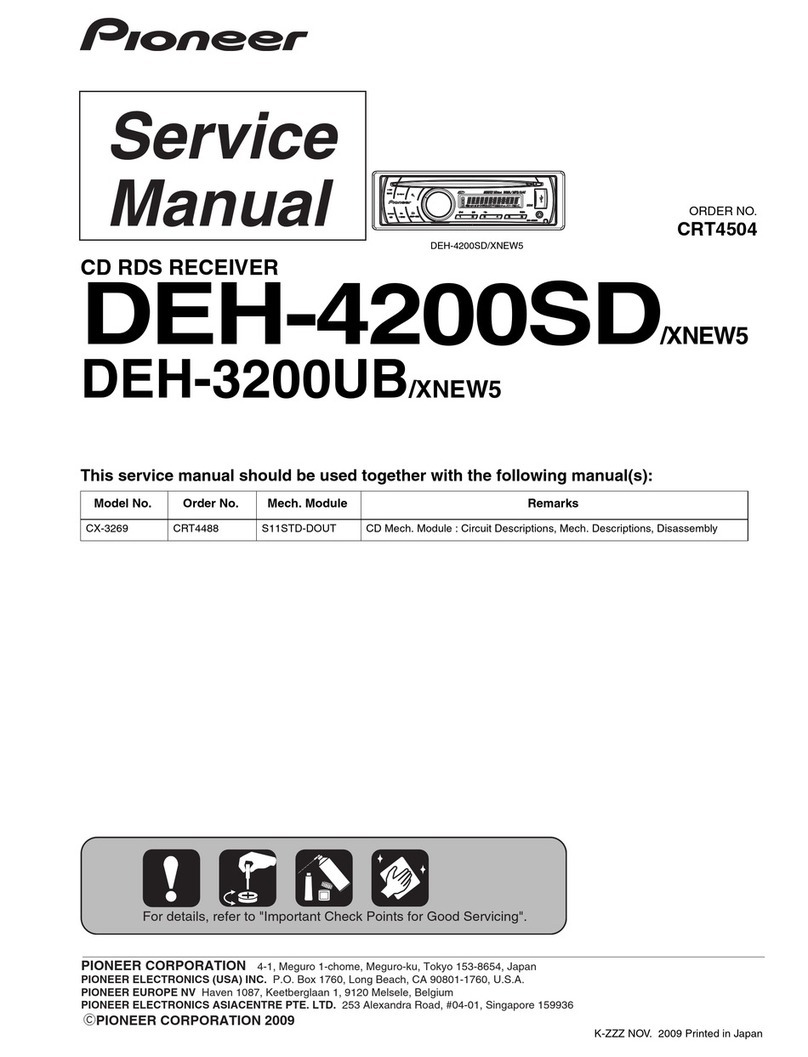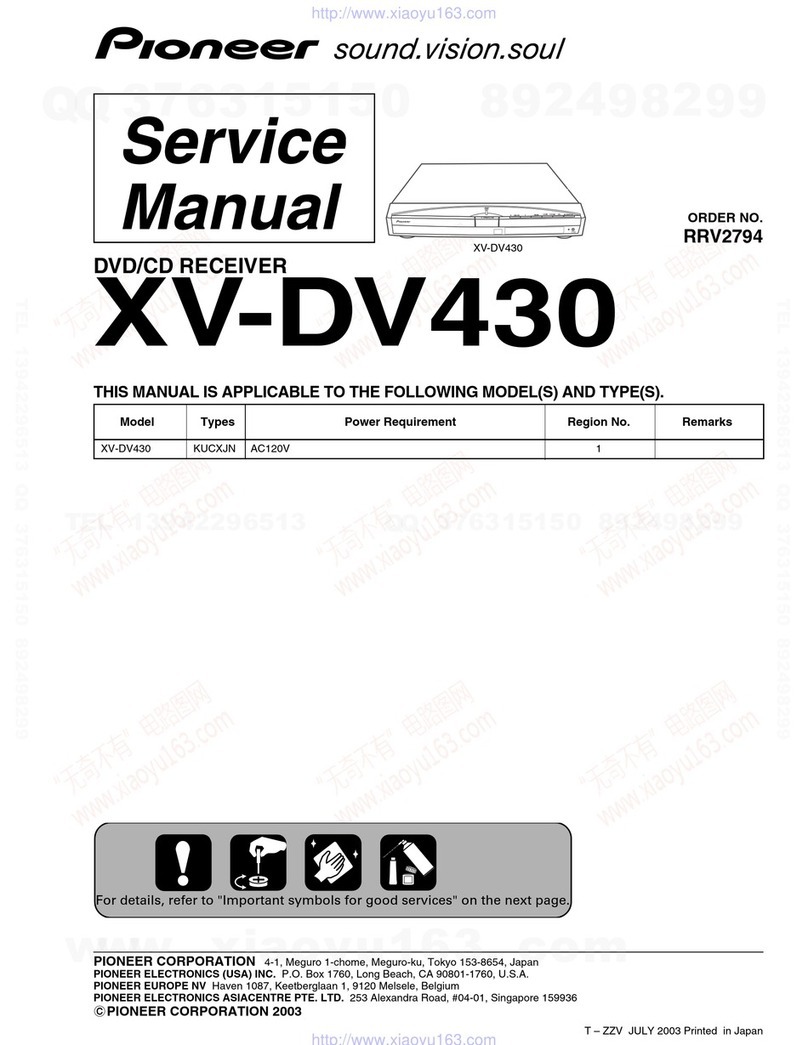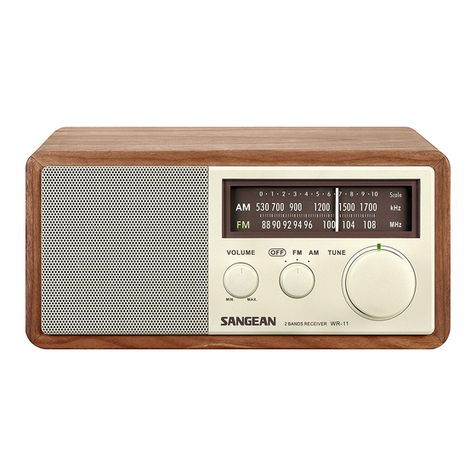
toggled through, so that you can define various
filter types for movies, music, or accepting
the default measured and recommended fil-
ters. The filters can be created via the “Auto
Pro” option, which automatically determines
the filters, or the “Manual Pro” option. The
“Manual Pro” option performs all the meas-
urements, with the end user selecting which
timing target is used for filter creation. A PC
can be attached to the RS-232 port and
after installing the appropriate software,
before and after correction curves can be
shown. Last but not least, an X-Curve can
be applied, which accounts for the acoustic
space, and applies the curve based on
best values for the room’s volume. The X-
Curve is used in dubbing stages and pro-
fessional theatres to provide a pleasing
sonic result to the ear.
I personally found little difference sonical-
ly when comparing the “front align” and “All
channel EQ” options. I did, however, find
that the improvements wrought by MCACC
were not subtle and led to a much more
pleasing sonic character than was other-
wise available, and for my recorded listen-
ing impressions, I had MCACC engaged
whenever possible.
Movie Performance
A quick note about the conditions and
conclusions that are being brought forth to
you. I found my conclusions to be consis-
tent between my primary reference system
and my secondary reference system. All of
the sonic qualities you are reading about
were culled from notes taken while listening
to the secondary system.
The Shawshank Redemption
seems to be
presented quite frequently on one of the
high-definition movie channels, and during
the review period I availed myself to a
showing of this “modern classic.” Here, I
think that Morgan Freeman’s voice is more
naturally portrayed, with Tim Robbins’ voice
tended more towards the sibilant. It wasn’t a
terrible artifact, but it was consistently
noticeable from scene to scene. I ran down-
stairs at one point to check with my primary
reference system, and found that the sibi-
lance was less apparent. As the movie
draws to its conclusion and Dufresne’s cell
is checked and the rock goes through the
Raquel Welch poster, the rock echoes as it
bounces down the carved tunnel, showing
how Dufresne managed his “great escape.”
In
Se7en
I selected the scene where Mills
and Somerset encounter John Doe in the
apartment building hallway. The sound of
Doe’s gunshots explode onto the sound-
stage in a convincing facsimile of the on-
screen action. Later in the scene as Doe
fires at Mills from the alley, the enclosed
space of the alley causes you to wince at
the loudness and its percussive attack. I
can’t say that I've spent a lot of time shoot-
ing firearms, and that goes double for firing
them in alleys or indoors! What was really
nice, though was the underlying carpet of
rain throughout this scene that was
omnipresent though often overshadowed by
sound effects and music. The rain effect
was very engulfing and well done. I wish I
could do the evaluation and have an “all
Morgan Freeman” set of references, but
alas it was not to be for this review.
Blue Man Group’s
The Complex Rock
Tour Live
is a high energy presentation that
I caught during the summer of 2003. I have
the same complaint about this DVD-Video
as I did in the concert hall. The audio is
compressed to within an inch of its life! If
that’s the case, then why use this as a refer-
ence disc? The unique instruments are one
of the reasons, the other is that it's just plain
fun. Even the bonus music videos tend to
suffer from too much compression. The
unique signature of the backpack tubulum
is well done. The majority of the body and
timbre of the mallet stricken PVC tubes is
played back with good fidelity. The Angel
Airpole doesn’t quite whip through the
soundstage as well as my primary refer-
ence system, but the order of magnitude
pricing differential means it shouldn't. The
VSX-56TXi acquits itself quite well when
considering price. The sound was never
harsh, even when played as loud as my
ears could handle.
Music Performance
Starting with stereo, the VSX-56TXi doesn’t
quite have the width of stereo presentation
as some other components I have used in
my secondary reference system, including
the Sunfire Ultimate Receiver. It provides
only a modest bit of wraparound and not
the engulfment that other products have
given on the right material. Willie Nelson’s
Stardust
(SA-CD via i.Link) is one that’s
been getting a fair amount of playing time
during this review. The natural, relatively
unprocessed presentation has aged well in
the 25-plus years since this recording was
made. Of particular note is the warmth of
the lead vocal, which has a richness that
pulls you into the performance, as well as
an excellent portrayal of fingers on an
acoustic guitar's fret board during
“Moonlight In Vermont.” Last but not least,
the plaintive call of the harmonica is also well
portrayed. Quite convincing, although it does-
n’t reach the level of “in your room” presence
that I hear in the primary reference system.
Soundstage width is good overall and
outstanding for the price point. I pulled out
a guilty pleasure disc,
Kenny Loggins’
Greatest Hits
on stereo SA-CD for this
review, where track two can have a very
convincing pseudo-surround presentation at
its best. The VSX-56TXi delivered a sound-
stage whose apparent width exceeded the
placement of the loudspeakers but doesn’t
tend to deliver that wraparound effect that
happens with the best out there. Between
the speakers, placement is clear and pre-
cise, with the two points in space for
Loggins’ and Nicks’ voice correctly located
between the loudspeakers.
Diana Krall’s
The Girl In The Other Room
is her latest effort and is a return back to
the more traditional jazz quartet, instead of
the “Diana With Strings” format she’s had
for the last few discs. There are several out-
standing tracks, with the two-beat Latin feel
of Joni Mitchell’s “Black Crow” (Track 8)
being one of my favorites. Here, the rich-
ness of the electric guitar (Anthony Wilson)
is always found. In addition, during his
improvisation work, the individual notes of
some blistering double time runs are still
played back with good clarity and preci-
sion. Krall’s voice retains the slight breathi-
ness and her sometimes excessive sibi-
lance––ably demonstrated when she sings
the word shiny. The acoustic piano is well
done, and the various percussion instru-
ments utilized are all cleanly portrayed in
their own space. “Narrow Daylight” (Track
9) is a more intimate presentation, and the
warmth of the VSX-56TXi is keenly notice-
able on the vocals presented. With both of
these presentations, I felt the absence of
MCACC (not available with multichannel
SA-CD), as there was some excess rever-
beration in the 60 Hz region where the
acoustic bass would have particular notes
bloom.
Steely Dan’s
Gaucho
was their last album
released prior to a 20-year hiatus and their
jump to a new record label. The title track
begins with the tenor sax of Tom Scott, and
the VSX-56TXi does a good job of preserv-
ing the slightly congested tonal quality of
this particular track. It’s still a very good
auditioning track, and the various elements
on the masterfully mixed disc by Elliot
Scheiner are effectively presented in 24-
bit/96 kHz surround. Of particular note is
the body and weight of the mass vocals for
the chorus and the distinctive style of
Fagan’s electric piano. I'm not sure how he
manages to pull off nonchalance, while still
hitting the rhythmic marks time and time again.
For overall surround soundstage integra-
tion, I turned to the Flaming Lips’
Yoshimi
Battles The Pink Robots
. The track “Do You
Realize” should provide a fully-immersive
holosonic™soundfield with complete rotation
of the mix around the listening position.
equipment Review
www.WidescreenReview.com • Issue 97 • June 2005
Page 4/5 4
97PioneerRP 5/16/05 2:12 PM Page 25
